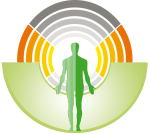What is Bone Densitometry?
Bone densitometry is an imaging method used to measure bone mineral density and assess the risk of osteoporosis. This procedure utilizes X-ray technology to calculate the density of bone tissue and, considering the patient’s age and ethnicity, determines whether the patient is affected by osteoporosis.
Tabesh Medical Imaging Center employs the latest global technology, specifically the Horizon DXA system by Hologic (USA), to provide the most accurate bone density assessments. This advanced device offers enhanced capabilities for evaluating bone health.
Why Should You Undergo Bone Densitometry?
Osteoporosis causes bone fragility. The wrist, spine, and hip bones are at the highest risk of fracture.
Since this condition is painless, people with osteoporosis are often unaware of their condition until a bone collapses or breaks. Therefore, bone densitometry is performed as a predictive and preventive measure.
Osteoporosis has no symptoms. To detect osteoporosis before a bone fracture occurs, a BMD (Bone Mineral Density) scan must be done—especially if you are in a high-risk group.
Which Parts of the Body Are Scanned?
Standard bone density scans are usually performed on the lumbar spine and upper femur.
If the patient has metal implants in the back or hips, alternative scans may be done on other areas such as the forearm.
Who Needs This Test?
Osteoporosis often goes unnoticed, so it is recommended that everyone undergo this scan as part of a regular check-up.
However, individuals who are at higher risk of developing osteoporosis have an increased need for bone densitometry. These individuals include:
Postmenopausal women or those who have had their ovaries surgically removed
People over the age of 50
Those who have lost height over the years
Individuals with low calcium intake or who rarely consume dairy
People with little or no physical activity
Smokers
Those who frequently consume coffee, tea, or alcohol
People with a family history of osteoporosis
Individuals with fair skin
When Should You Measure Bone Density?
Although osteoporosis has no initial symptoms, it increases the risk of fractures.
Bone densitometry is mainly used for people at risk of osteoporosis.
Since bone density decreases after menopause and the risk of fractures rises after age 65, it is advisable for women aged 65 and older to undergo a bone density scan.
You should consider a bone densitometry scan in the following cases:
Bone fracture from minor trauma
Curvature of the spine due to vertebral fractures
Long-term corticosteroid use (which causes osteoporosis)
Early menopause (before age 45)
Missed periods (amenorrhea) for over a year before menopause
Conditions associated with osteoporosis such as rheumatoid arthritis or celiac disease
Family history of hip fractures on the mother’s side
Very low body weight (BMI under 19)
Key Features of the Horizon DXA Machine:
High-Resolution Imaging: Provides accurate images of bone density, body composition, and even abdominal aortic calcification.
Fast and Precise Assessment: Delivers comprehensive bone health data in a short time with minimal radiation.
Hidden Fracture Detection: Can detect vertebral fractures in under 10 seconds.
Body Composition Analysis: Measures fat and muscle composition for a full-body health assessment.
Cardiovascular Risk Evaluation: Detects aortic calcifications to assess cardiovascular risks.
Pediatric Software: Special low-dose mode for safe and accurate scans in children, using a dedicated database.
Advanced Fracture Analysis: Identifies atypical femur fractures and analyzes the biomechanical structure of the hip.
Why Choose Tabesh Medical Imaging Center?
Use of cutting-edge global technology for bone densitometry
Accurate and expert reports delivered in under 24 hours
Minimal radiation dose to ensure patient safety
Early diagnosis of osteoporosis and hidden fractures
A professional, fully equipped, and standard environment for patient comfort
At this center, the results chart is handed to the patient immediately after the scan. Additionally, the radiologist’s written report will be ready within less than 24 hours.
Frequently Asked Questions
No, the test is performed as a scan and involves no pain or invasive procedures. The machine is also open-design, so individuals with claustrophobia will not experience any discomfort.
According to international standards, bone densitometry is conducted on specific areas of the body. If your knee, neck, or other joint pain is related to osteoporosis, it will be detectable through this scan.
No, in general, the radiation dose of a bone density scan is very low and is not harmful—even for children, except for pregnant women.
Additionally, the device used at Tabesh Medical Imaging Center is designed to minimize patient radiation exposure to the lowest possible level.

